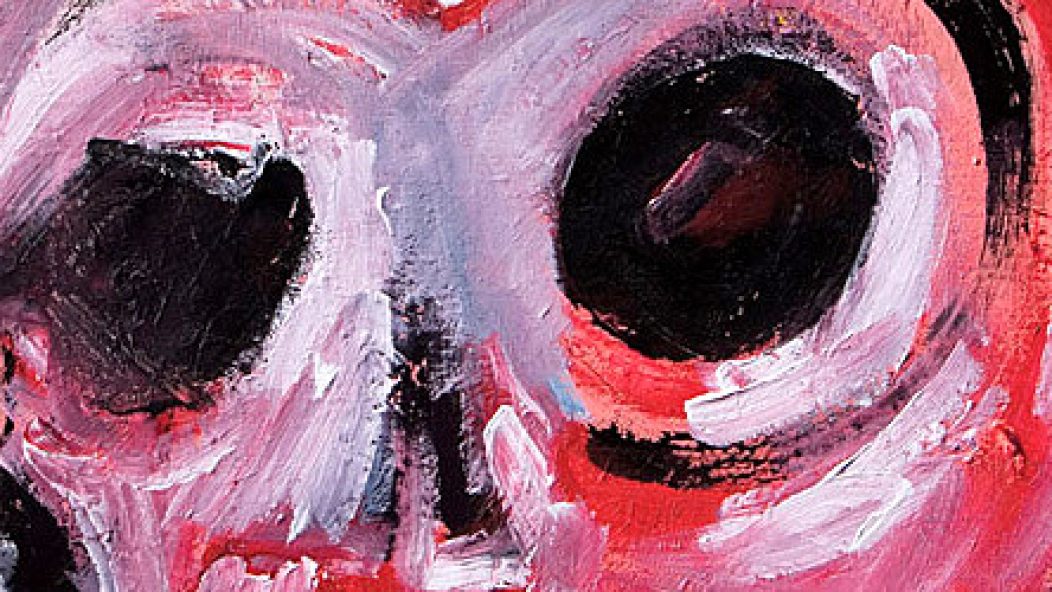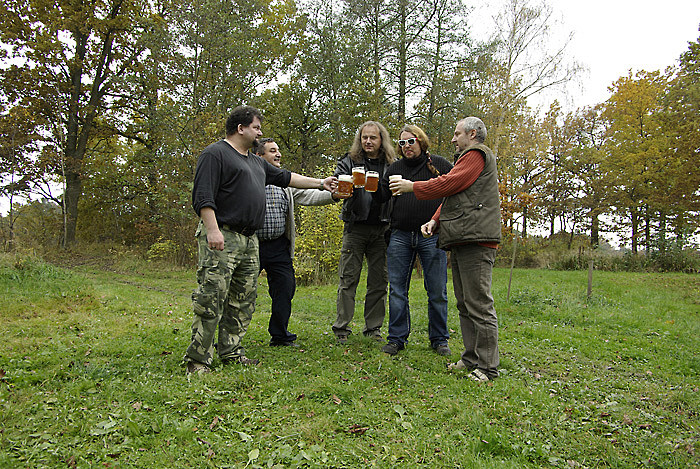
Master's Hammer - Mantras

. . .
During the 14 years between Šlágry and Mantras (Self-released, 2009), Franta Štorm did two things to make his band more fun and relaxing. He built a modest home studio, and he started splitting time between the Czech countryside and rural India, where the members of Master’s Hammer regularly vacation together. The band’s existence contracted and expanded at once.
These movements warped the sense of space in their music. Mantras‘ drums were performed on an electronic kit and edited on a computer, resulting in the most intricate percussion of the band’s career, alien to both metal and electronic music. The cut-and-paste concept carries over to the entire mix. Club-friendly keyboards, tympani, massive Bolt Thrower-style guitars, and vocal treatments work as collage elements, glued together with virtual reverb. The do-it-yourself production isn’t lo-fi. It’s clean, but jarringly, unprofessionally digital.
If what I describe sounds too artificial, perhaps it’s time to reconsider what “real” sounds like. In general, producers use sound to portray a space that doesn’t exist; their goal is to harmonize the sonic qualities of an imagined space with those of the work space. Steve Albini, Bob Ezrin, and Darkthrone all deal in virtual reality.
So recorded music is inherently phony. And when it comes to metal albums, the illusion of space is only one way in which an album can approximate truth-to-life. Alternatively, a recording artist can sonically recast a range of life experiences in metal.
. . .
In a recent interview, Štorm said, “We prefer to sing real stories which happened to us, rather than telling tales”. I don’t speak Czech, but I feel safe in assuming that he’s singing about his career as a typographer in “Typograf”, over a ridiculously barrel-chested riff that matches down-tuned reverse gallops to jackhammer blastbeats. “Mantra” can be translated as “word of truth”, and on Mantras, the production evokes the influence of India’s environment and religious tradition.
Aside from the soundtrack-style synths and flourishes of Asian music, a hot and humid atmosphere is audible on this album. It comes from the inside of someone’s mouth. Štorm’s black metal singing takes the form of long sequences of verse, enunciated in a moist, overdriven whisper. In a real space, you’d have to be very close to a person speaking this softly in order to receive such detailed information.
In this virtual space, multi-tracking and stereo effects depict Štorm as an enormous head, blotting out the sky and drenching the field in condensed breath. In some songs, stereo throat singing forms a continuous background drone, recalling a stream or river. In the intro to “Jáma Pekel”, hard-panned vocal samples sequenced to imitate a chorus of frogs replace the rhythm guitars. “Červené Blato” squashes the guitars to make room for a voice singing aum. With its low frequencies boosted, the track resembles both a synth bass line and the hum of the intoned word reverberating in one’s body.
The band’s vision spans continents and lifetimes, but their means of portraying it are idiosyncratic and cheap. It’s like watching Avatar performed with cardboard scenery and lewd sock puppets (probably an improvement on the original). Part of what we appreciate in puppet theatre is the disjunction between the story and the way it’s told – the resourcefulness, the humanity.
The riffs – have I mentioned these yet? Mantras‘ first two songs feature descending Aeolian melodies that roll down like thunder from mountains, then hit the ground with brutally tight chugging. Even in the heart of the album, where the mix is overwhelmed with eerie drones, muddy echoes of Front 242, and mutterings in Czech about Hinduism and beer, ultra-heavy guitars and double bass persist. It reminds me of hearing Sepultura’s Chaos A.D. for the first time as an 11 year-old, and realizing that heavy metal can open up a rather large view on the world.
. . .
HEAR MANTRAS
“Typograf”
. . .
“Jáma Pekel”
. . .
Stream excerpts from all the songs
Photos of inspirations and recording sessions for Mantras
. . .
BUY MANTRAS
You can’t. Mantras‘ pressing of 1000 CDs and 500 LPs has sold out. You can find the album digitally at your local Internet.
. . .











